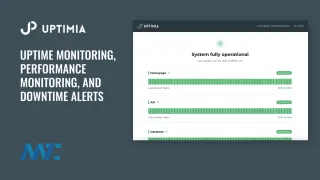A passive, continuous method of measuring the performance and user experience of a website or application based on the actual interactions of real users. Unlike synthetic monitoring, which relies on scripted tests, RUM collects data from real devices, networks, and geographies, providing a comprehensive and authentic view of how a digital service behaves in the real world.
At its core, RUM operates by embedding lightweight monitoring scripts into web pages or applications. These scripts capture detailed information about user sessions, including page load times, responsiveness, errors encountered, network conditions, and device characteristics. This telemetry is then aggregated and analyzed to assess performance trends, diagnose problems, and guide optimization efforts.
The importance of RUM has grown significantly with the rise of highly dynamic and globally distributed web applications, where user experiences can vary dramatically based on factors outside the organization’s immediate control, such as third-party services, ISP quality, or regional content delivery network (CDN) performance.
Key Metrics and Data Captured by RUM
- Page Load Time: Measures how long it takes for a page to become fully interactive after a user initiates a request. This includes metrics such as First Contentful Paint (FCP) and Largest Contentful Paint (LCP).
- User Interaction Timing: Tracks the speed at which an application responds to user actions, such as clicking a button or entering information into a form. Metrics such as First Input Delay (FID) are crucial for understanding responsiveness.
- Errors and Failures: Captures JavaScript errors, failed resource loads (such as missing images or scripts), and other client-side issues that degrade the user experience.
- Geographic and Device Data: Collects information on the user’s location, browser type, operating system, and device type to understand how performance varies across different contexts.
- Session and Navigation Tracing: Maps the user’s journey through the application, noting how long they stay on pages, the sequence of pages visited, and potential drop-off points.
- Network and Connectivity Performance: Monitors latency, connection stability, and download speeds to detect whether poor network conditions are impacting performance.
Benefits of Real User Monitoring
RUM offers several strategic and operational advantages:
- It provides ground truth about user experience by measuring real-world conditions rather than simulated ones.
- It helps prioritize optimization efforts by highlighting the most impactful performance bottlenecks affecting real users.
- It supports regional performance analysis, allowing organizations to optimize CDN strategies, server locations, and content delivery for different global audiences.
- It enables user segment-specific insights, such as understanding how performance varies between desktop and mobile users or between users on different browsers.
- It fosters proactive issue identification, often surfacing problems that internal QA or synthetic monitoring might miss due to the diversity of real-world environments.
How RUM Works
The typical RUM workflow involves:
- Instrumentation: A JavaScript library or monitoring agent is embedded into the application.
- Data Collection: As users interact with the application, the script passively collects performance data and sends it to a centralized monitoring platform.
- Aggregation and Analysis: Collected data is aggregated and visualized in dashboards that allow teams to track KPIs, identify anomalies, and drill into specific sessions or cohorts.
- Alerting and Reporting: Based on predefined thresholds or patterns, teams are notified of performance regressions or systemic issues, enabling faster responses and continuous improvement.
As modern applications increasingly adopt client-side rendering, Single-Page Applications (SPAs), and Progressive Web Apps (PWAs), the role of RUM is expanding. Traditional page load measurements are no longer sufficient; user engagement now depends on a continuum of interactions that extend beyond the initial load. As a result, RUM solutions are evolving to capture finer-grained timing metrics, monitor SPA route changes, and integrate more tightly with error reporting, session replay, and customer journey analytics.
Furthermore, Real User Monitoring is becoming increasingly essential for meeting regulatory and performance standards, such as Google’s Core Web Vitals (CWV), which directly impact search rankings and digital visibility.
